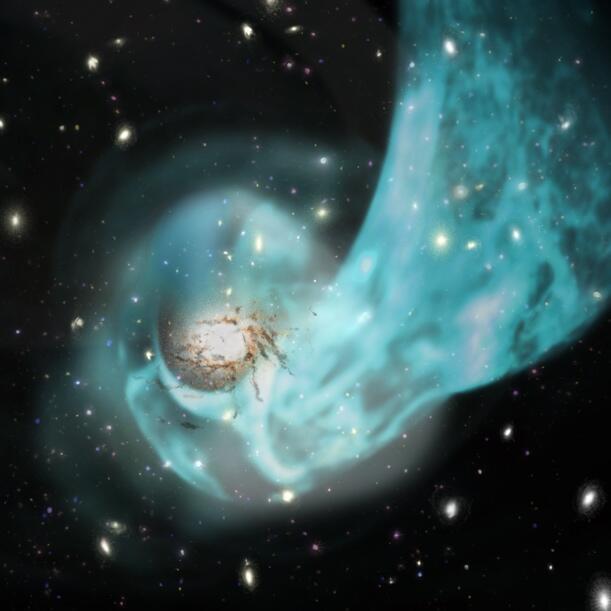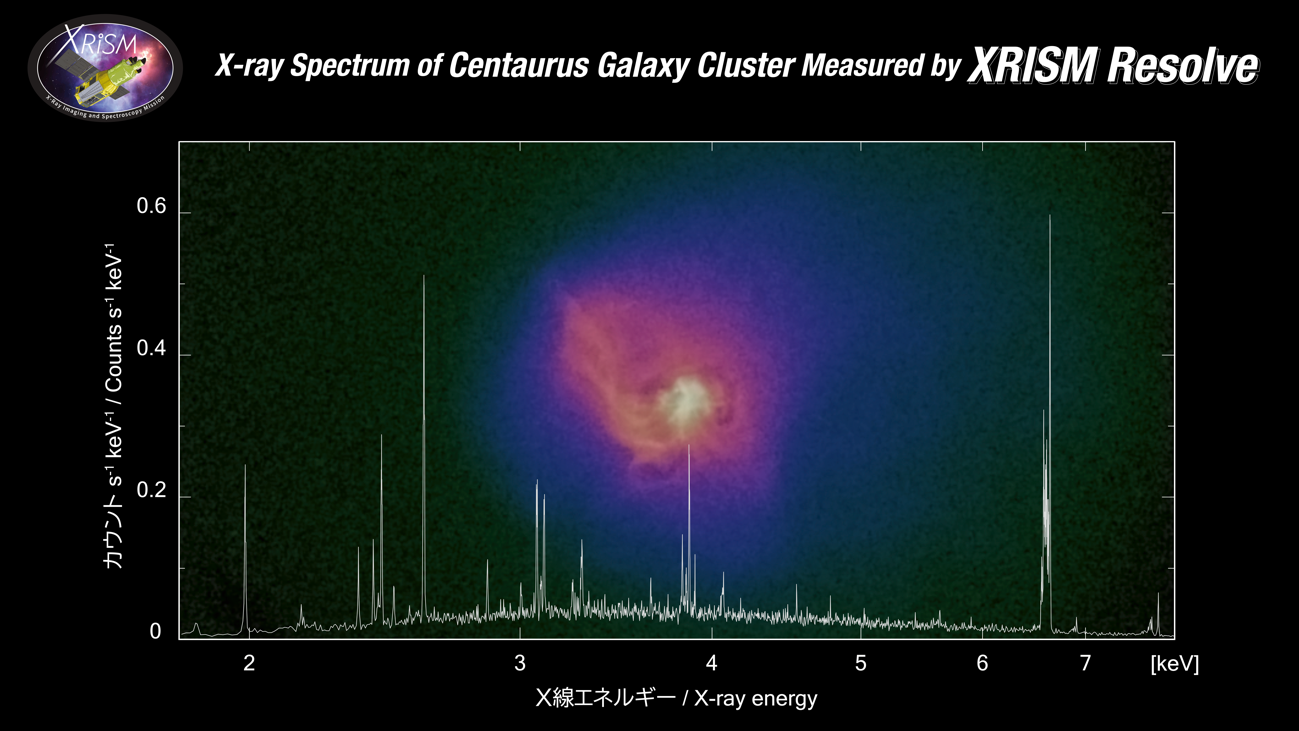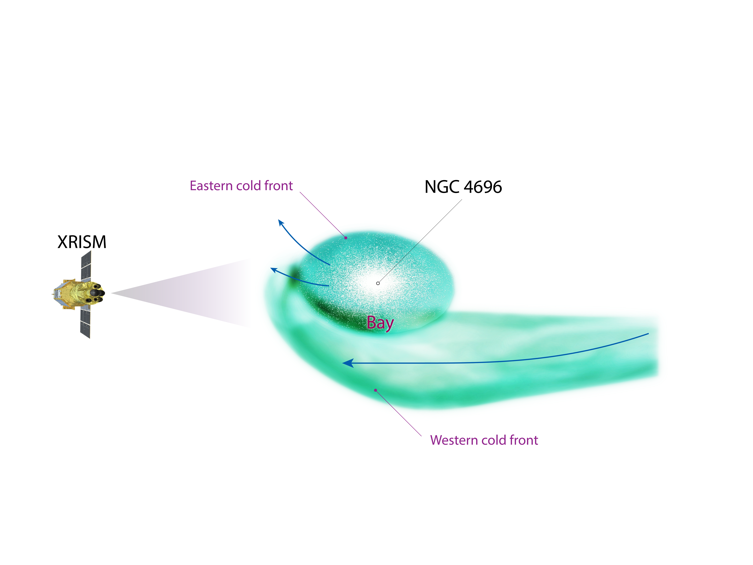Marc Audard1,
Hisamitsu Awaki2,
Ralf Ballhausen3,4,5,
Aya Bamba6,
Ehud Behar7,
Rozenn Boissay-Malaquin4,5,8,
Laura Brenneman9, Gregory V. Brown10,
Lia Corrales11,
Elisa Costantini12,
Renata Cumbee4, María Díaz Trigo13,
Chris Done14,
Tadayasu Dotan15,
Ken Ebisawa15,
Megan E. Eckart10,
Dominique Eckert1,
Teruaki Enoto16,
Satoshi Eguchi17,
Yuichiro Ezoe18,
Adam Foster9,
Ryuichi Fujimoto15,
Yutaka Fujita*18,
Yasushi Fukazawa19,
Kotaro Fukushima15,
Akihiro Furuzawa20,
Luigi Gallo21,
Javier A. García4,22,
Liyi Gu12,
Matteo Guainazzi23,
Kouichi Hagino6,
Kenji Hamaguchi4,5,8,
Isamu Hatsukade24,
Katsuhiro Hayashi15,
Takayuki Hayashi4,5,8,
Natalie Hell10,
Edmund Hodges-Kluck4,
Ann Hornschemeier4,
Yuto Ichinohe25,
Manabu Ishida15,
Kumi Ishikawa18,
Yoshitaka Ishisaki18,
Jelle Kaastra12,26,
Timothy Kallman4,
Erin Kara27,
Satoru Katsuda28,
Yoshiaki Kanemaru15,
Richard Kelley4,
Caroline Kilbourne4,
Shunji Kitamoto29,
Shogo Kobayashi30,
Takayoshi Kohmura31,
Aya Kubota32,
Maurice Leutenegger4,
Michael Loewenstein3,4,5,
Yoshitomo Maeda15,
Maxim Markevitch4,
Hironori Matsumoto33,
Kyoko Matsushita30,
Dan McCammon34,
Brian McNamara35,
François Mernier3,4,5,
Eric D. Miller27,
Jon M. Miller11,
Ikuyuki Mitsuishi36,
Misaki Mizumoto37,
Tsunefumi Mizuno38,
Koji Mori24,
Koji Mukai4,5,8,
Hiroshi Murakami39,
Richard Mushotzky3,
Hiroshi Nakajima40,
Kazuhiro Nakazawa36,
Jan-Uwe Ness41,
Kumiko Nobukawa42,
Masayoshi Nobukawa43,
Hirofumi Noda44,
Hirokazu Odaka33,
Shoji Ogawa15,
Anna Ogorzalek3,4,5,
Takashi Okajima4,
Naomi Ota45,
Stephane Paltani1,
Robert Petre4,
Paul Plucinsky9,
Frederick Scott Porter4,
Katja Pottschmidt4,5,8,
Kosuke Sato*28,46,
Toshiki Sato47,
Makoto Sawada29,
Hiromi Seta18,
Megumi Shidatsu2,
Aurora Simionescu12,
Randall Smith9,
Hiromasa Suzuki15,
Andrew Szymkowiak48,
Hiromitsu Takahashi19,
Mai Takeo28,
Toru Tamagawa25,
Keisuke Tamura4,5,8,
Takaaki Tanaka49,
Atsushi Tanimoto50,
Makoto Tashiro15,28,
Yukikatsu Terada15,28,
Yuichi Terashima2,
Yohko Tsuboi51,
Masahiro Tsujimoto15,
Hiroshi Tsunemi33,
Takeshi G. Tsuru16,
Hiroyuki Uchida16,
Nagomi Uchida15,
Yuusuke Uchida31,
Hideki Uchiyama52,
Yoshihiro Ueda53,
Shinichiro Uno54,
Jacco Vink55,
Shin Watanabe15,
Brian J. Williams4,
Satoshi Yamada56,
Shinya Yamada29,
Hiroya Yamaguchi15,
Kazutaka Yamaoka36,
Noriko Y. Yamasaki15,
Makoto Yamauchi24,
Shigeo Yamauchi45,
Tahir Yaqoob4,5,8,
Tomokage Yoneyama51,
Tessei Yoshida15,
Mihoko Yukita4,57,
Irina Zhuravleva58,
Marie Kondo28,
orbert Werner59,
Tomáš Plšek59,
Ming Sun60,
Kokoro Hosogi60,
Anwesh Majumder12,61
1Department of Astronomy, University of Geneva, Geneva, Switzerland
2Department of Physics, Ehime University, Matsuyama, Japan
3Department of Astronomy, University of Maryland, College Park, MD, USA
4NASA / Goddard Space Flight Center, Greenbelt, MD, USA
5Center for Research and Exploration in Space Science and Technology, NASA / GSFC (CRESST II), Greenbelt, MD, USA
6Department of Physics, University of Tokyo, Tokyo, Japan
7Department of Physics, Technion, Haifa, Israel
8Center for Space Science and Technology, University of Maryland, Baltimore County, Baltimore, MD, USA
9Center for Astrophysics | Harvard-Smithsonian, Cambridge, MA, USA
10Lawrence Livermore National Laboratory, Livermore, CA, USA
11Department of Astronomy, University of Michigan, Ann Arbor, MI, USA
12SRON Netherlands Institute for Space Research, Leiden, The Netherlands
13ESO Supernova, Garching bei München, Germany
14Centre for Extragalactic Astronomy, Department of Physics, University of Durham, Durham, DH1 3LE, UK
15Institute of Space and Astronautical Science (ISAS), Japan Aerospace Exploration Agency (JAXA), Kanagawa, Japan
16Department of Physics, Kyoto University, Kyoto, Japan
17Department of Economics, Kumamoto Gakuen University, Kumamoto, Japan
18Department of Physics, Tokyo Metropolitan University, Tokyo, Japan
19Department of Physics, Hiroshima University, Hiroshima, Japan
20Department of Physics, Fujita Health University, Toyoake, Japan
21Department of Astronomy and Physics, Saint Mary’s University, Halifax Nova Scotia, Canada
22Cahill Center for Astronomy and Astrophysics, California Institute of Technology, Pasadena, CA, USA
23European Space Agency (ESA), European Space Research and Technology Centre (ESTEC), Noordwijk, The Netherlands
24Faculty of Engineering, University of Miyazaki, Miyazaki, Japan
25RIKEN Nishina Center, Saitama, Japan
26Leiden Observatory, University of Leiden, The Netherlands
27Kavli Institute for Astrophysics and Space Research, Massachusetts Institute of Technology, Cambridge, MA, USA
28Department of Physics, Saitama University, Saitama, Japan
29Department of Physics, Rikkyo University, Tokyo, Japan
30Faculty of Physics, Tokyo University of Science, Tokyo, Japan
31Faculty of Science and Technology, Tokyo University of Science, Chiba, Japan
32Department of Electronic Information Systems, Shibaura Institute of Technology, Saitama, Japan
33Department of Earth and Space Science, Osaka University, Osaka, Japan
34Department of Physics, University of Wisconsin, Madison, WI, USA
35Department of Physics and Astronomy, Waterloo Centre for Astrophysics, University of Waterloo, Waterloo Ontario, Canada
36Department of Physics, Nagoya University, Nagoya, Japan
37cience Research Education Unit, University of Teacher Education Fukuoka, Munakata, Japan
38Hiroshima Astrophysical Science Center, Hiroshima University, Hiroshima, Japan
39Department of Data Science, Tohoku Gakuin University, Sendai, Japan
40College of Science and Engineering, Kanto Gakuin University, Yokohama, Japan
41European Space Agency (ESA), European Space Astronomy Centre (ESAC), Madrid, Spain
42Department of Science, Faculty of Science and Engineering, KINDAI University, Osaka, Japan
43Department of Teacher Training and School Education, Nara University of Education, Nara, Japan
44Astronomical Institute, Tohoku University, Sendai, Japan
45Department of Physics, Nara Women’s University, Nara, Japan
46International Center for Quantum-field Measurement Systems for Studies of the Universe and Particles (QUP) / High Energy Accelerator Research Organization (KEK), Tsukuba, Japan
47School of Science and Technology, Meiji University, Kawasaki, Japan
48Yale Center for Astronomy and Astrophysics, Yale University, New Haven, CT, USA
49Department of Physics, Konan University, Kobe, Japan
50Graduate School of Science and Engineering, Kagoshima University, Kagoshima, Japan
51Department of Physics, Chuo University, Tokyo, Japan
52Faculty of Education, Shizuoka University, Shizuoka, Japan
53Department of Astronomy, Kyoto University, Kyoto, Japan
54Nihon Fukushi University, Shizuoka, Japan
55Anton Pannekoek Institute, University of Amsterdam, Amsterdam, The Netherlands
56RIKEN Cluster for Pioneering Research, Saitama, Japan
57Johns Hopkins University, Baltimore, MD, USA
58Department of Astronomy and Astrophysics, University of Chicago, Chicago, IL, USA
59Department of Theoretical Physics and Astrophysics, Faculty of Science, Masaryk University, Brno, Czech Republic
60Department of Physics and Astronomy, University of Alabama in Huntsville, Huntsville, AL, USA
61Astronomical Institute ‘Anton Pannekoek’, University of Amsterdam, Amsterdam, The Netherlands
*Corresponding Authors



